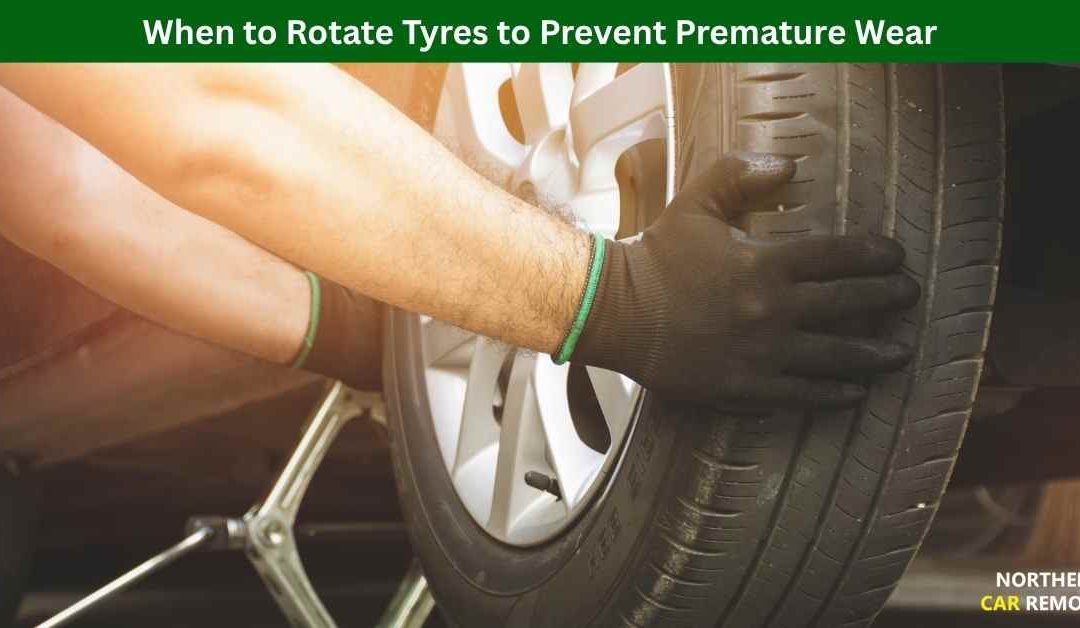Tyres are one of those things we often take for granted—until they start causing problems. A smooth ride suddenly becomes a bumpy one, or your steering starts pulling to one side. Often, it’s uneven tyre wear to blame. And one of the simplest ways to prevent that? Regular tyre rotation.
Let’s break down when and why you should rotate your tyres, without turning it into a science lecture.
Why Tyre Rotation Matters
Tyre rotation is exactly what it sounds like—changing the position of each tyre on your vehicle. This helps them wear more evenly over time.
See, different tyres carry different loads. For example, in front-wheel-drive cars, the front tyres handle most of the steering and braking force. As a result, they tend to wear out faster than the rear ones. By rotating the tyres, you give each one a chance to work in a different position and take on a different load.
Even wear = longer tyre life = more money saved in the long run.
So, When Should You Rotate Your Tyres?
A good rule of thumb is every 10,000 km or every 6 months, whichever comes first. But always check your car’s owner’s manual—it may recommend a different schedule based on your vehicle’s make and model.
If you drive often on rough roads, carry heavy loads, or take a lot of sharp turns (hello, Melbourne city drivers!), you might need to rotate them more frequently.
Signs It’s Time for a Rotation
Even if you haven’t hit the 10,000 km mark yet, watch out for:
- Uneven tread wear
- Steering that pulls slightly to one side
- More vibration than usual, especially at higher speeds
- A noticeable drop in traction or fuel efficiency
If any of those sound familiar, your tyres could be crying out for a switch-up.
Common Rotation Patterns
The right pattern depends on whether your tyres are directional or non-directional, and whether your car is front-, rear-, or all-wheel drive.
- Front-wheel drive: Rear tyres move to the front, and front tyres move to the opposite side at the rear (cross-pattern).
- Rear-wheel or AWD: Front tyres move to the back, and back tyres cross to the opposite front side.
- Directional tyres: These can only rotate front-to-back on the same side.
Not sure which type you’ve got? Ask your mechanic or tyre shop during your next service. They’ll be happy to help.
Real-World Example
One of our customers came in recently with a car that had only done 25,000 km, but the front tyres were already bald while the rears still looked new. Turns out, they never rotated their tyres. A simple $40 rotation early on could’ve extended the life of all four tyres and saved them from buying two new ones.
Tyre Rotation: A Small Job With Big Benefits
Regular rotation doesn’t just keep you safer—it also improves your car’s handling, gives better fuel efficiency, and extends the life of your tyres. It’s a small thing that often gets overlooked, but it really pays off over time.
And if you’re ever unsure about the condition of your tyres or when your last rotation was, just swing by your local tyre service or mechanic. They’ll set you straight.
Let’s Wrap It Up This Way…
Rotating your tyres might seem like a minor task, but it plays a big role in keeping your car in top shape. Whether you drive daily across Melbourne or just run errands on weekends, keeping tyre wear even is a no-brainer move that saves you money, stress, and unexpected trips to the tyre shop.
If you are in Gowanbrae, and looking to sell your car, this is the best way to find us.
1/26 Acacia St, Glenroy VIC 3046
0437 773 905


Recent Comments